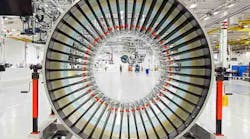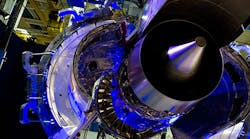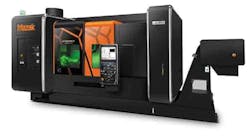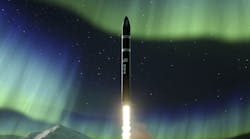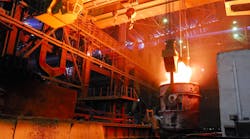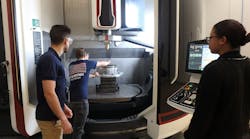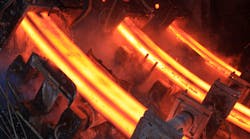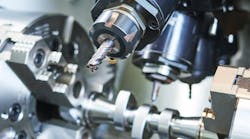Pratt & Whitney is set to deliver the first of its full-series production PurePower® PW1500G engines to Bombardier this year, engines it noted will be the first to feature entry-into-service jet engine parts produced by additive manufacturing.
The aircraft engine builder has been engaged in additive manufacturing efforts for over two decades, and claims to have produced more than 100,000 prototype parts via additive processes. Still, it noted the compressor stators and synch ring brackets produced for the PW1500G will be the first produced via additive manufacturing technology directly for finished commercial application.
The PW1500G is a high-bypass, geared turbofan engine selected by Bombardier as the exclusive power source for its C-Series twin-engine jets.
"Additive manufacturing offers significant benefits to the production of jet engines," said Lynn Gambill, chief engineer, Manufacturing Engineering and Global Services at Pratt & Whitney. "We have engine-tested components produced through additive manufacturing in the PW1500G."
Additive manufacturing is a description for various technologies that converts CAD-derived data into three-dimensional parts. Layered deposition, or 3D printing, is one approach. Laser sintering is another. The parts produced by additive manufacturing often achieve geometric dimensions that casting, forging, or machining cannot accomplish.
The PurePower engine family parts will be the first produced using 3D printing powder bed additive manufacturing.
Other manufacturing technologies used to produce PurePower engine parts include metal injection molding, electron beam melting and laser powder bed fusion, including direct metal laser sintering (a frequently used additive manufacturing process.)
"Pratt & Whitney has been working with additive manufacturing since the 1980s, and we are looking forward to our upcoming milestone, when the first production PurePower PW1500G engines with parts produced through additive manufacturing will be delivered," stated Tom Prete, Engineering vice president.
"We are a vertically integrated additive manufacturing producer with our own metal powder source and the printers necessary to create parts using this innovative technology,” Prete continued. “As a technology leader, we are intrigued by the potential of additive manufacturing to support our suite of technologies and benefits to customers and the global aerospace industry."
In its production tests, the engine builder has said it has accomplished lead-time savings up to 15 months and up to 50% weight reduction (compared to conventional manufacturing processes) for a single part.
In addition, Pratt & Whitney and the University of Connecticut are collaborating to research and develop powder bed additive manufacturing. The Pratt & Whitney Additive Manufacturing Innovation Center has more than $4.5 million invested to advance Pratt & Whitney's additive manufacturing capabilities while providing educational opportunities for future manufacturing engineers.


